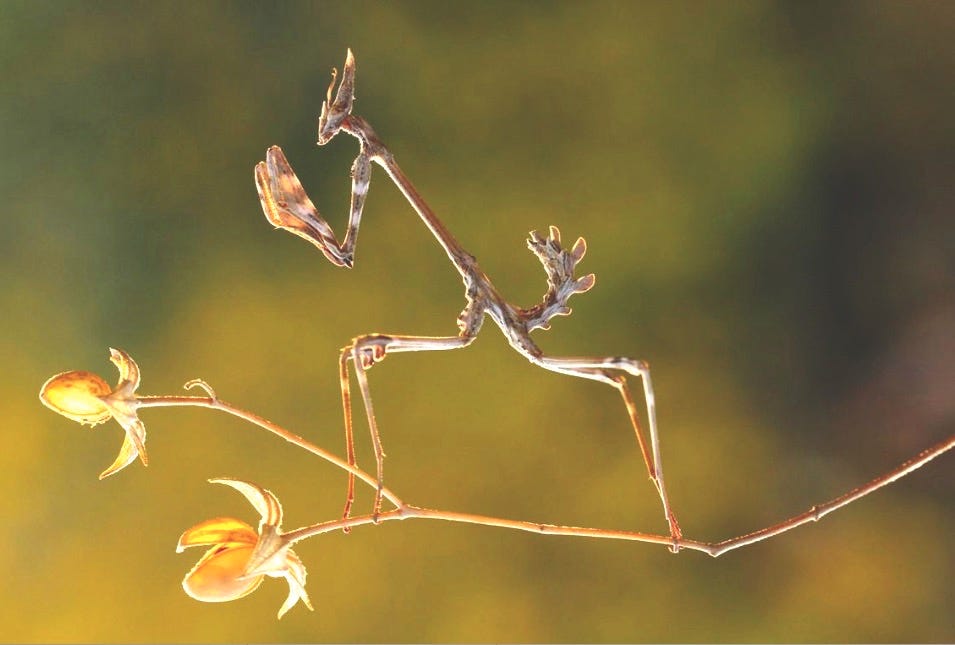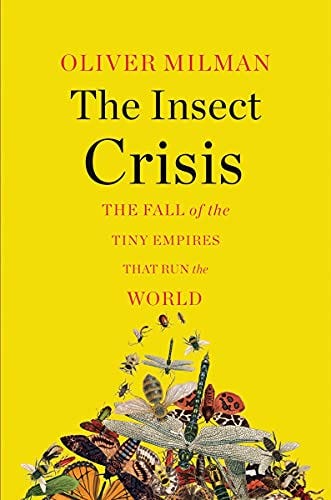“Look at all the fireflies in your garden,” I said to my daughter one recent evening.
“It’s the most I’ve seen in a while,” She agreed.
“But I’ve hardly seen any bees this year.”
Sadly, no one else is seeing bees either unless they’re beekeepers with their domestic honeybees. All 50 species of native bumblebees in the US and Canada are in sharp decline. Some of these important pollinators have declined more than 90% in the last 20 years.
Need-to-Know: Insects are vanishing everywhere researchers look.
Anyone over 50 or 60 years of age can likely recall summer drives that featured bug-splattered car windshields. That’s not some random bit of nostalgia, there is scientific evidence from the Danish “windshield experiment”.
Every day from May to September, researchers drive a car 25 kilometers up and down a road along the flat farmland in north Jutland, Denmark and count the squashed bugs on the windshield. They do this nine times a day, and have done so for the last 25 years.
In the first years, windshields needed to be regularly scraped clean to drive safely. Recent years have produced many zero-insect days, when no insects struck the windshield. The overall result: a 97% decline in flying-insect abundance.
It’s not just Denmark. Germany has seen a 76% decline in insect numbers. Across much of the world, their numbers are half what they were 30 years ago, according to new research that looked at 20,000 different species.
The decline is accelerating. A U.N. assessment done in 2019 found that half a million insect species are under threat of extinction in coming decades.
Insects will survive, but will our already-stressed global-food production system survive the continuing decline of the many insects that pollinate major food crops?
Staples like wheat, corn and rice, are wind-pollinated. However at least 1,000 of the plants we grow for food, beverages, edible oils, fibers and medicines need to be pollinated by insects.
For example, potatoes need bumblebees. There is no cocoa (chocolate) without midge flies, nor much coffee or cinnamon without honeybees and wasps.
Need-to-Know: $577 billion per year—the value of insect pollination
The value of pollination to food production was estimated at up to $577 billion a year. Yes, that’s every year. That value has tripled with the rapid growth of food production in the past 50 years.
Insects pollinate nearly 90% of wild flowering plants and disperse seeds. They also help keep pest species under control, break down dead material, maintain soil structure and fertility.
Need-to-Know: Continued insect decline will cripple efforts to increase food production.
Insects are a vital source of protein for many birds. Insect-eating birds — including many songbirds we all love — are in sharp decline as a direct result.
Need-to-Know: Insects are the biological foundation for most ecosystems.
Scott Hoffman Black, Executive Director of the Xerces Society, an international conservation organization, said in The Insect Crisis, by Oliver Milman (an excellent book on the topic):
“If you want birds, you need insects. If you want fruits and vegetables, you need insects. If you want healthy soils, you need insects. If you want diverse plant communities, you need insects.”
The four main causes of the global insect decline:
1. Habitat loss — Modern agriculture, combining intensive production practices with little natural habitat.
2. Pesticide use — Widespread use of the highly-toxic neonicotinoid (neonic) insecticides. I’ve written many articles on neonics, which are far worse than DDT. They make the tissues of crops toxic to insects from the top leaf to the bottom root. Neonic residues are widely found in soils and waterways with impacts on non-target insect species like bees as well as earthworms, birds and fish, according to several studies.
3. Climate change — Unlike the indestructible German cockroach, insects, particularly those in the tropics, only thrive under a narrow range of conditions. Hotter days, with little natural habitat to shade under, can be a lethal combination. Studies show that insects will be among the most affected by future warming.
Should warming, which is currently 1.2 degrees C, exceed 3 degrees C, pollinator populations will be decimated and vast areas of land will be unsuitable for many food crops. The implications for food production are staggering.
4. Ignorance — We built our societies and economies for our own comfort and benefit without understanding how the world really works. It’s clear we’ve built a house of cards because we have failed to accommodate and support other species that make our lives and livelihoods possible.
Our thinking about insects needs to evolve: Insects are not pests. Yes, some insects can transmit diseases, but so do we humans. In fact, if the global pandemic has taught anything, it’s that we are way better vectors of disease than any insect could ever be.
Need-to-Know: Insects make life possible for us. Insects are Us.
Here are some ways we can help out:
Regenerative or ecological agricultural practices can help insect populations recover. Using less chemicals, especially less neonics, planting a diversity of crops and preserving hedgerows or other natural habitat will be beneficial, and buffer some of the impacts of climate change.
Citizens in the German State of Bavaria overwhelmingly voted to convert 30% of farmland to organic or regenerative forms of agriculture and restore wetlands and hedgerows.
Farmers should be encouraged to plant herbs, spices, fruits along field margins or other unused spaces. Within a year or two, there will be more pollinator habitat and another income stream for farmers, says crop-improvement scientist, Stefanie Christmann.
Messy is neat. If we like to eat, we need to stop trying to make our land and landscapes look neat and tidy. That is a cultural hangover from 18th century English estates. A lawn is green desert. A pesticide-addicted lawn is a deathtrap for many insects and other species.
Plant native species where ever possible. Rooftop gardens can cool buildings and cities while reducing flooding. And they’re wonderful places to hang out.
Turn down or turn off outside lighting. Light pollution is becoming a major problem for insects as urban areas expand and switch over to those super-bright-white LED lights.
Hope this was of interest. Until next time, be well.
Stephen





